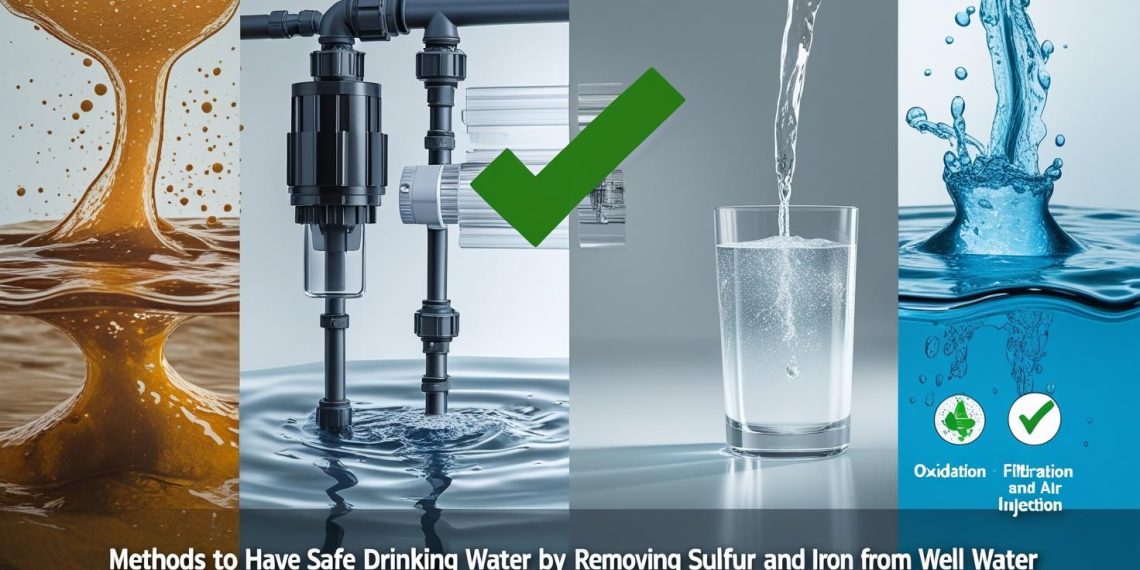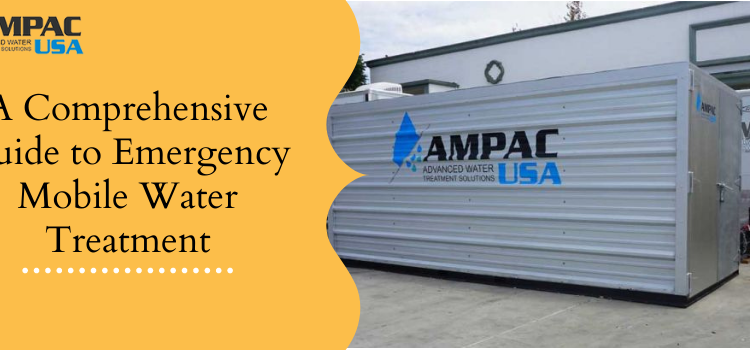Last updated on June 4th, 2025 at 04:02 pm
Access to safe drinking water is essential for public health, especially in rural areas where well water is a primary source. However, the presence of iron and sulfur compounds in well water can pose serious challenges, affecting not just the water’s taste and smell but also its safety and usability. At high levels, these elements lead to plumbing damage, staining, bacterial growth, and health concerns. Below, we explore effective methods to remove sulfur and iron from well water, ensuring a reliable supply of clean and potable water.
What Are the Impacts of Sulfur and Iron Contamination in Water?
Iron in Well Water
Iron commonly exists in two forms:
- Ferrous Iron (Fe²⁺): Dissolved and invisible, giving water a clear appearance.
- Ferric Iron (Fe³⁺): Oxidized and visible as reddish-brown particles.
Excess iron causes:
- Metallic taste
- Rust stains on fixtures and laundry
- Clogging in plumbing and appliances
Sulfur in Well Water
Sulfur typically enters water in the form of hydrogen sulfide gas (H₂S) or sulfates (SO₄²⁻). Hydrogen sulfide causes:
- A distinctive “rotten egg smell”
- Corrosive effects on metal pipes
- Discoloration and unpleasant taste
Read: Top 10 Contaminants Removed by Reverse Osmosis Water Filters
Comprehensive Methods for Removing Iron and Sulfur from Well Water
- Air Injection Oxidation Systems (AIO)
Air Injection Oxidation is a widely adopted and highly efficient method for treating both iron and hydrogen sulfide.
- How It Works: Air is injected into the water stream, oxidizing ferrous iron to ferric iron and hydrogen sulfide to elemental sulfur.
- The resulting particulates are then filtered out using media beds such as Birm or Catalytic Carbon.
- Systems regenerate automatically, requiring minimal manual intervention.
Benefits:
- Chemical-free
- Low maintenance
- Long system life
- Manganese Greensand Filters
Manganese Greensand is specially coated with potassium permanganate to oxidize and filter out iron, manganese, and hydrogen sulfide.
- Process: Water passes through a media bed that oxidizes and captures contaminants.
- Requires periodic regeneration with potassium permanganate.
Ideal for:
- Medium levels of sulfur and iron (2–10 ppm)
- Homes where chemical oxidation is acceptable
Limitations:
- Potassium permanganate must be handled and stored with care
- Requires consistent maintenance
Read: The Most Effective Way to Eliminate PFAS and PFOA from Your Drinking Water
- Chlorination and Filtration
Shock chlorination or continuous chlorination is effective against high levels of sulfur bacteria and iron bacteria that can worsen contamination.
- Step 1: Injection of chlorine or bleach into the water supply
- Step 2: Retention tank holds water to allow chlorine to oxidize iron and sulfur
- Step 3: Filtration removes the oxidized particles
Advantages:
- Kills bacteria
- Controls biofouling
- Removes taste and odor
Considerations:
- Regular monitoring of chlorine levels
- Activated carbon filters needed to remove chlorine residue
- Hydrogen Peroxide Injection
An excellent alternative to chlorine, hydrogen peroxide (H₂O₂) is a powerful oxidizer that reacts instantly with hydrogen sulfide and iron.
- No harmful byproducts like trihalomethanes (common in chlorination)
- Often paired with catalytic carbon filters for superior filtration
Best for:
- Homes with moderate to high sulfur odors
- Systems requiring minimal chemical residues
- Ozone Treatment Systems
Ozone (O₃) is another advanced oxidizing agent used for treating well water contaminated with iron, sulfur, and bacteria.
- Injected via an ozone generator into a contact tank
- Breaks down sulfur compounds and oxidizes metals
- Effective against microorganisms without added chemicals
Pros:
- Strong disinfection
- Eco-friendly
- Eliminates taste and odor issues
Cons:
- High initial cost
- Requires electricity and periodic servicing
- Water Softeners (for Iron)
Conventional ion exchange water softeners can remove small amounts of ferrous iron along with calcium and magnesium.
- Best for low iron concentrations (less than 2 ppm)
- Requires regular salt replenishment
- Ineffective for sulfur or bacterial iron
- Filox, Katalox Light, and Catalytic Carbon Filters
These advanced media types offer multi-contaminant removal:
- Filox & Katalox Light: Excellent for oxidizing and filtering high levels of iron and sulfur
- Catalytic Carbon: Adsorbs hydrogen sulfide and organic compounds
These systems often combine with backwashing filters and air injection units for maximum performance.
Choosing the Right System for Your Needs
Step 1: Water Testing
Before selecting a treatment method, conduct a comprehensive water analysis to measure:
- Total iron (ferrous and ferric)
- Hydrogen sulfide levels
- Presence of iron/sulfur bacteria
- pH level
- Manganese concentration
Step 2: Identify Load and Usage
Consider:
- Daily water consumption
- Number of residents
- Flow rate requirements
- Space availability for equipment
Step 3: Select the Right Combination
Most effective systems combine filtration and oxidation, often integrating:
- Air injection + Filox/Katalox Light
- Chlorination + Carbon Filtration
- Hydrogen Peroxide + Catalytic Carbon
Read: 8 Benefits of Installing a Home Water Filtration System
Health and Household Benefits of Removing Iron and Sulfur
- Improved Taste and Odor: Eliminating hydrogen sulfide makes water more palatable.
- Plumbing Longevity: Reduced pipe corrosion and fixture staining.
- Appliance Efficiency: Less buildup in heaters, washing machines, and dishwashers.
- Health Protection: Limits exposure to harmful bacteria and heavy metals.
- Aesthetic Improvements: Stain-free sinks, clothes, and bathtubs.
Maintenance and Monitoring Tips
- Schedule regular backwashing and media replacements
- Check oxidant levels if using chemicals (chlorine or peroxide)
- Clean retention and pressure tanks periodically
- Perform annual water tests to ensure consistent performance
- Use pre-filters to extend system life
When to Consult a Water Treatment Professional
DIY filters may suffice for mild contamination, but for complex or severe iron/sulfur issues, consulting a certified water treatment expert is essential. They can:
- Conduct accurate testing
- Recommend system combinations tailored to your well’s geology
- Ensure installation complies with plumbing and health standards
Conclusion
Ensuring safe drinking water from well sources involves proactive steps to remove sulfur and iron contaminants. From air injection systems to advanced oxidation technologies like ozone and hydrogen peroxide, there are numerous solutions tailored to varying contamination levels and household needs. By investing in the right system and performing regular maintenance, we can guarantee clean, odor-free, and health-compliant water for everyday use.











